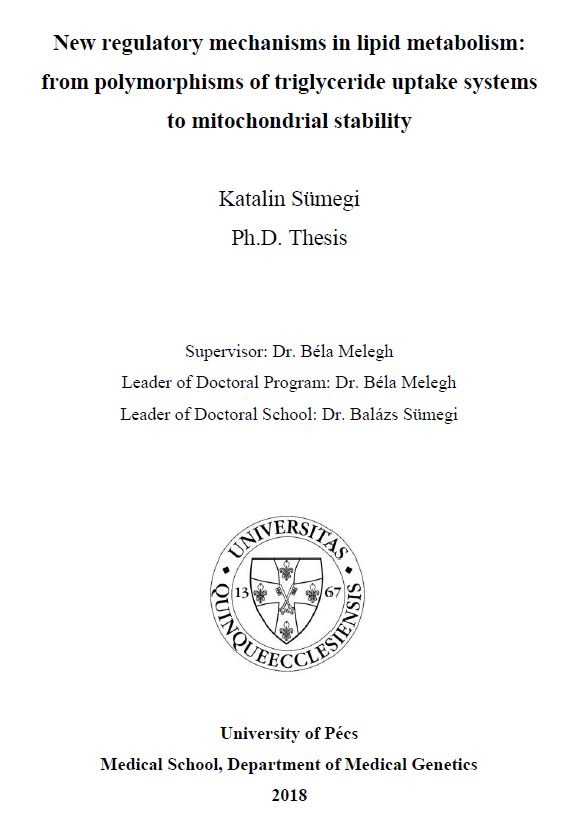New Regulatory Mechanisms in Lipid Metabolism: from Polymorphisms of Triglyceride Uptake Systems to Mitochondrial Stability
Abstract
Cardiovascular diseases (CVD) are a major cause of death worldwide. The recent genome-wide association studies (GWAS) revealed genetic polymorphisms associated with blood lipid level changes. Nowadays, special attention gained on metabolic consequences, including triglyceride level increases, confirming risk for cardiovascular diseases, metabolic syndrome or for cerebrovascular diseases, especially stroke events.
While the exact reasons behind CVD are unknown several studies have established that elevated triglyceride (TG) levels affected TG metabolism, are independent risk factors for CVD. Thus, research of the TG level modifier factors, especially genetic susceptibility variants, may have clinical importance. These factors include, amongst others, ANGPTL3, CILP2, TRIB1, MLXIPL, GALNT2, GCKR and APOA5 genes. As a prominent example, the functional role of APOA5 polymorphisms have already been widely investigated. Several of them are associated with elevated TG levels and higher risks for ischemic stroke and cardio- or cerebrovascular diseases or for metabolic syndrome. Recently, other TG modifying polymorphisms came into focus, which may also have role in development of different diseases. Some variants of these are mentioned in connection with increased, while others with decreased triglyceride levels. The elevated levels of certain TGs may have a higher risk for several vascular diseases, moreover significant associations between TG-elevating and polymorphisms were confirmed.
The intracellular fatty acids are catabolized predominantly in the mitochondria. Long chain fatty acids are transported to the mitochondrial matrix space by the carnitine acyl-transferase system, and on the end forming intramitochondrial long chain of fatty-acyl-CoA which is converted to acetyl-CoA by the mitochondrial beta-oxidation system. Free fatty acids besides contributing to ATP synthesis also cause serious stress to various tissues and can contribute to the development of cellular stress. Fatty acids contribute to intracellular reactive oxygen species (ROS) production in a significant extent in the mitochondria. Oxidative stress induced by palmitate can initiate Ca2+ release from the endoplasmic reticulum (ER) leading to ER stress and further ROS production. Elevated Ca2+ and ROS can initiate mitochondrial permeability transition causes superoxide production and the activation of mitochondrial apoptosis pathway. This vicious lipotoxicity pathway can lead to β-cell failure and insulin resistance and to diabetic complications.

